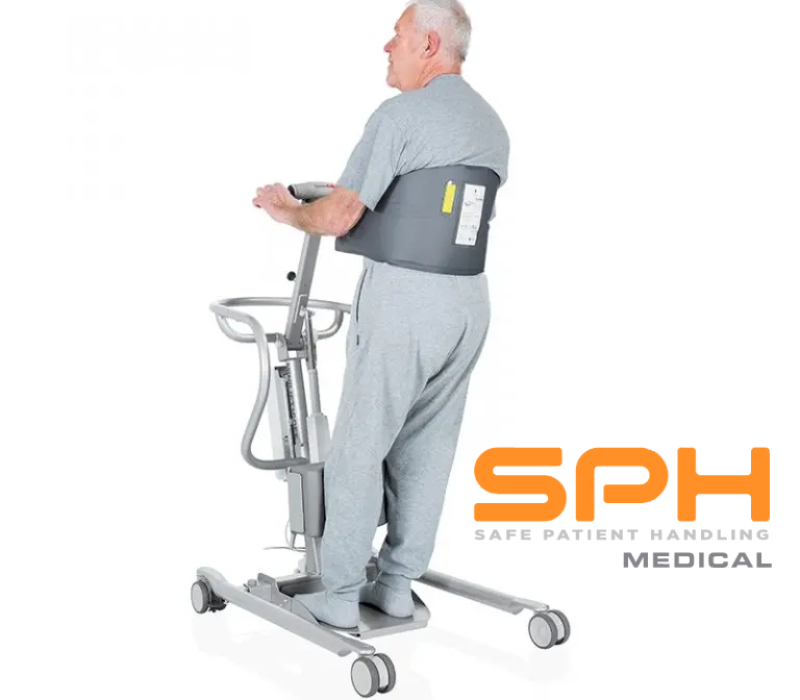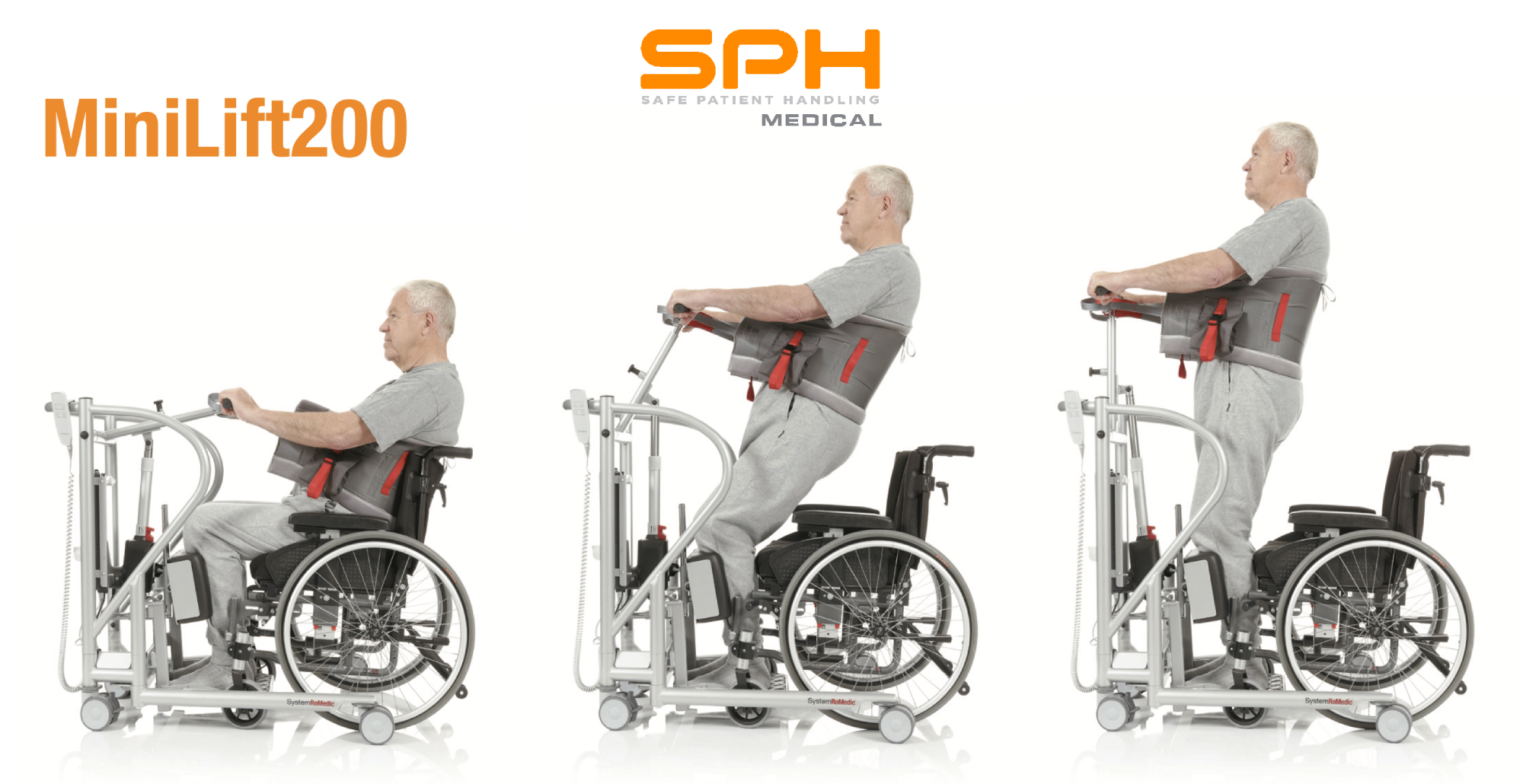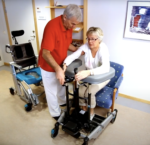Patient handling is a critical aspect of healthcare, often involving tasks that require physical strength and precision. Manual Patient Handling (MPH), while commonplace, presents potential hazards for both healthcare workers and patients. Musculoskeletal disorders, back injuries, and patient falls are just a few of the risks involved. SPH Medical’s Sit to Stand Devices like MiniLift 160 and MiniLift 200 offer an innovative solution to these challenges, providing safer and more comfortable patient experiences.
The Risks of Manual Patient Handling
MPH tasks typically involve lifting, transferring, and repositioning patients. These actions, when performed manually, can strain healthcare workers, leading to injuries. In fact, according to the Bureau of Labor Statistics, healthcare workers suffer from back injuries more than any other occupation. Moreover, MPH can also compromise patient safety, with the risk of falls, discomfort, and improper positioning.
The Imperative of Safe Patient Handling: Mitigating Risks in Healthcare
Patient handling is an integral part of the healthcare industry. However, Manual Patient Handling (MPH) – which entails lifting, transferring, and repositioning patients – poses significant challenges and risks for healthcare workers. These actions, when performed manually, can exert immense physical strain on healthcare professionals, leading to potential injuries.
The Prevalence and Impact of Injuries Among Healthcare Workers
According to the Bureau of Labor Statistics, healthcare workers are more susceptible to back injuries than any other profession. This alarming statistic sheds light on the physical demands of patient handling tasks and the ensuing toll on healthcare workers’ health and well-being.
Healthcare workers repeatedly perform heavy manual lifting associated with patient handling, which leads to overexertion2. This overexertion often results in musculoskeletal disorders (MSDs), including chronic back pain, muscle strains, and joint injuries. Such injuries not only affect the physical health of healthcare workers but also influence their mental well-being, job satisfaction, and overall quality of life.
Compromising Patient Safety: The Other Side of the Coin
The repercussions of MPH extend beyond healthcare workers to patients as well. When healthcare workers grapple with the physical strain of MPH, it can lead to unsafe patient handling practices, increasing the risk of patient falls, discomfort, and improper positioning.
Patient falls, in particular, are a significant concern. Falls can lead to serious injuries, prolonged hospital stays, and a decrease in long-term mobility. Additionally, improper positioning can lead to pressure sores, respiratory problems, and reduced patient comfort.
The Call for Safe Patient Handling Practices
Given these risks, the need for safe patient handling (SPH) practices is clear. SPH practices involve the use of sit to stand Devices and assistive devices and proper patient handling techniques to minimize the physical strain on healthcare workers and enhance patient safety.
Implementing SPH practices significantly reduces the risk of overexertion injuries by replacing manual patient handling with safer, more efficient methods. Moreover, it improves the quality of patient care, ensuring that patients are handled with utmost safety and comfort.
The importance of safe patient handling cannot be overstated. It is a critical aspect of ensuring the safety and well-being of both healthcare workers and patients. By acknowledging the risks associated with MPH and adopting SPH practices, we can foster a safer, healthier, and more effective healthcare environment.
How Sit to Stand Devices like MiniLift Mitigate Manual Handling Risks
Sit to stand devices like the MiniLift 160 and MiniLift 200 are designed to mitigate these risks. Unlike traditional methods of manually helping patients to stand and transfer, these devices enable safe, active patient transfers, reducing the physical strain on healthcare workers.
These devices are appropriate for patients who can follow instructions independently and possess some upper body strength. By encouraging patients to participate actively in their mobility, these devices promote muscle strength and overall health.
Benefits of Using MiniLifts
MiniLifts offer multiple benefits, including:
- Patient Comfort and Safety: The unique design ensures a comfortable, natural movement pattern during sit-to-stand transitions, reducing the risk of falls and enhancing patient safety.
- Reduced Risk for Healthcare Professionals: By minimizing manual lifting, the devices significantly lower the risk of back injuries and other musculoskeletal disorders among healthcare workers.
- Fewer Bed-Rest Complications: Active patient transfers help mitigate the complications associated with prolonged bed rest, such as muscle atrophy and bedsores.
Features and Capabilities of MiniLifts and Sit to Stand Devices
The MiniLift series incorporates numerous features that enhance its usability and effectiveness. These include adjustable lower leg support, easy-to-use hand controls, and lockable rear casters for added safety. Notably, the MiniLift 160 and MiniLift 200 come with different weight capacities, catering to diverse patient needs.
Choosing the Right MiniLift
When selecting a MiniLift, consider factors like the patient’s weight, mobility level, and the specific transfer tasks required. Also, consider the device’s compatibility with other equipment in your facility, like wheelchairs or beds.
Sit to Stand Devices Conclusion
Adopting best practices for patient handling is not just a requirement – it’s a commitment to the safety and well-being of both patients and healthcare professionals. The MiniLift 160 and MiniLift 200 embody this commitment, offering a safer, more comfortable, and effective solution to patient handling. It’s time to rethink how we handle patient mobility and embrace the benefits of technology like MiniLifts.



